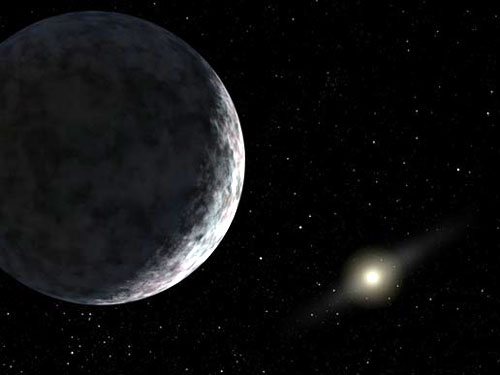 First object larger than Pluto found in outer solar system August 02, 2005
Planetary scientist Mike Brown of the California Institute of Technology, whose work was funded by NASA, announced the discovery July 29.  Image credit: NASA/JPL-Caltech
But some scientists dispute the classification of Pluto as a planet. Scientists do not have a specific definition for the term, but a working group of the International Astronomical Union (IAU) is developing a definition. The IAU holds its next general assembly in 2006. Brown and colleagues Chad Trujillo of the Gemini Observatory in Hawaii and David Rabinowitz of Yale University in Connecticut discovered the planet in 2003 using a telescope at Palomar Observatory in California. The object, temporarily called 2003UB313, was so far away that the discoverers didn't detect its motion until they reanalyzed the data in January. According to news reports, Brown made the announcement after being notified that someone had gained illegal entry to a secure Web site that contained the discovery and threatened to release the information to the public. During the past seven months, the scientists have been studying the planet to better estimate its size and its motions. The planet is a typical member of the Kuiper belt, Brown said, but its estimated size in relation to the nine known planets means that it can only be classified as a planet. The Kuiper belt is an area of the solar system beyond the orbit of Neptune. Objects in the belt are called trans-Neptunian objects or sometimes asteroids. Most Kuiper belt objects are lumps of ice with some organic (carbon-containing) material. They are the same composition as comets and many astronomers believe they are comets. The new planet, 97 times further from the sun than the Earth, is the farthest-known object in the solar system and the third brightest of the Kuiper belt objects. The discoverers proposed a name for the planet to the IAU and are waiting for a decision. Some news reports say the discoverers are informally calling the planet Xena. "It will be visible with a telescope over the next six months and is currently almost directly overhead in the early-morning eastern sky, in the constellation Cetus," Brown said. Brown said the new planet orbits the sun once every 560 years. Publish A Letter on SitNews Read Letters/Opinions Submit A Letter to the Editor
|